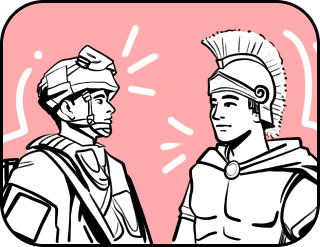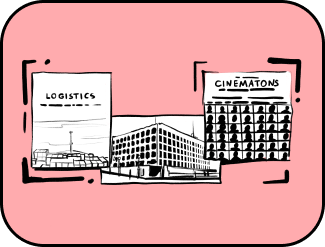Category: Materialization technologies
Behind the scenes of animated films
“If Walt Disney’s pen had taken a different angle, instead of DuckTales we might well
ended up with RoosterTales”
Found somewhere in the depths of the internet
“Animation is not the art of moving drawings,
but the art of drawn movements”
The film director and animator Norman McLaren
Variety shows, spotlight glare, and cartoons that were never meant for innocent eyes. Hard to believe now, but in the early 20th century, animation was a pastime crafted for grown-ups. On those flickering screens danced dinosaurs, caricatured villains, and rather suggestive beauties. Cartoons back then were an adult indulgence — no place for cute characters or rainbow-colored happy endings.
And truth be told, there are still animated films today not meant for the faint of heart. Take Satoshi Kon’s Perfect Blue, for instance. A psychological puzzle that flips your sense of reality so effectively, the tension practically hums in the air. By the final frame, you’ll find yourself staring at the ceiling, contemplating what ‘real life’ even means, and quietly mourning just how easily one can lose themselves in this world.
Cartoons for Grown-Ups
It turns out, cartoons were originally made for adults — and we barely noticed when that changed. In the early days, animators were more like experimenters and artists than storytellers for children. They weren’t crafting moral tales for little ones, but rather captivating adult audiences by showing off the wonders of new technology.
Meet Gertie the Dinosaur (1914) — one of the earliest animated films. Gertie chomps on trees, follows commands, and acts like a playful pet. This quirky dinosaur delighted audiences with her antics, though the subtle humor was still a little too sophisticated for younger viewers.
Then came the coquettish, wide-eyed beauty of the 1930s — Betty Boop. Far from innocent, Betty’s flirtatious persona, cheeky innuendos, and boozy jokes were never meant for children. She was made for those who loved jazz, mischief, and a touch of playful scandal.
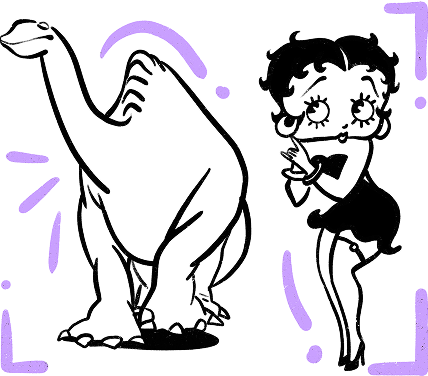
Back then, adults watched cartoons to laugh, chat about the stories with friends, and simply have a good time. But somewhere along the way, cartoons got younger — and money had a lot to do with it. Savvy animators realized that kids made for a loyal, eager audience who would fall head over heels for animated worlds. And, of course, it was good business.
Cartoons were tidied up: adult humor, risqué jokes, and anything that might raise an eyebrow among the young were quietly removed. The stories grew kind, wholesome, and lighthearted — much like the animated shows we know today.
Who knows — maybe a hundred years from now, our grandchildren will be looking back at today’s cartoons, wondering: “Wait… were these really meant for kids?”
The Anatomy of an Animation Team
Behind every colorful animated film and captivating storyline is a real team turning ideas into reality through technology.
Forget the old stereotype of a director in a beret, perched proudly atop a mountain of sketches with a megaphone in hand. In animation, there are no soloists — but rather a choir, where each voice has its own part to sing. And if someone picks the wrong shade of color, it might cause a little creative chaos.
It all begins with the storyline. A scriptwriter crafts the plot, builds the world, and invents the characters. A storyboard artist — the master of visual storytelling — turns those thoughts into sketches. Then, using 3D tools, the entire team reviews every frame before a single second of video is created. Only after that do animators breathe life into the characters, giving them emotions and experiences. Thanks to powerful software, from classic 2D tools to advanced motion capture systems, their work transforms text into a living, breathing story.
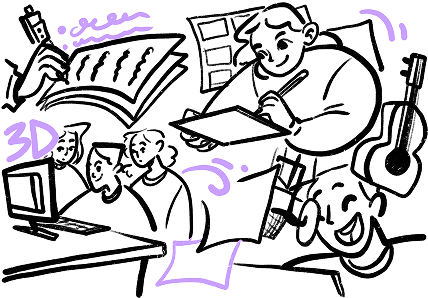
A sound designer creates the voices of the characters. Modern audio engines build immersive soundscapes, pulling the audience into the animated world. And finally, the film reaches the hands of the colorist. With carefully chosen palettes, this artist sets the tone, mood, and visual atmosphere for the entire story. You could say the colorist narrates every frame with color alone.
It might sound like everything’s ready: the scriptwriter writes a scene where the character feels sad, the storyboard artist figures out how to show it, the animator brings the character to life, the sound designer adds melancholy music, and the colorist mutes the palette. But there’s one more vital step — every file, from the script to the final animation, is stored in a version control system. This ensures everything stays organized, easy to track, and simple to revisit if anyone needs to tweak a scene or retrieve an early draft.
And when it comes to the final stage, creating a finished animated film demands enormous computing power. Modern studios rely on render farms — networks of hundreds or even thousands of computers working in parallel to turn digital files into seamless animated magic.
A Peek Inside Pixar’s Studio
In the room where Pixar’s brilliant writers and animators gather, creativity buzzes in the air, and coffee and cookies wait patiently on the table. The team comes together to discuss the script and give honest feedback. Everyone dissects the story bit by bit — until someone blurts out, “Hey, why does our hero act like a total idiot in this scene?” Instantly, ideas start flying on how to fix it and save the film from flop territory. For example, during the making of Finding Nemo, the team tweaked scenes to make the main character — a tiny clownfish — more relatable and believable to the audience.
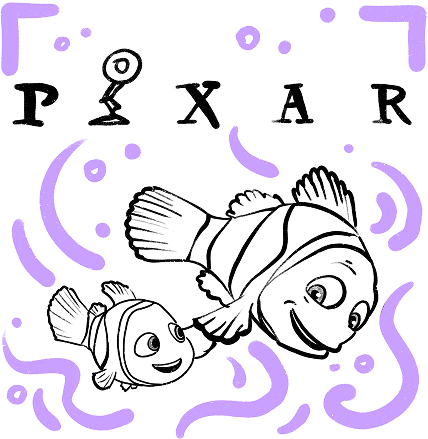
Nightmare Country at Laika Studio
At Laika, artists, writers, and animators meet daily — because without constant communication, the story’s thread could unravel. If suddenly, halfway through the film, the hero changes hair color or starts speaking with an accent — that’s a disaster. Or if an animator decides their puppet should leap over a giant gap without telling the writer, the puppet might end up in a plot hole, since the fall isn’t consistent with the storyline.
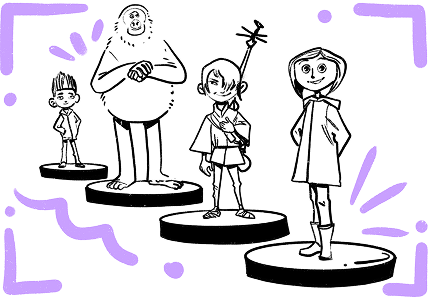
Spider-Man: Into the Spider-Verse
Spider-Man proved you can find diamonds in chaos. When creating the film about the web-slinging hero, artists and animators worked separately — which resulted in a completely fresh product. It’s like preparing the ingredients of a dish individually, then bringing them all together on one plate.
When Miles Morales jumps across rooftops, you can see the animation style shift depending on his emotions. This happens because artists worked independently on visual elements, creating an effect of “diversity within unity.”
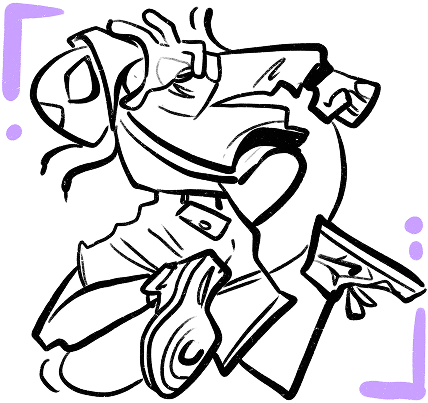
Behind every animated film lies a whole ecosystem of ideas, debates, creativity, and technology. The minds behind the scenes work in harmony to craft the stories we all love.
How Beloved Characters Are Born
Ever wonder who first decided a rat could become a top chef in a Parisian restaurant? Or that tiny yellow creatures in overalls and goggles would conquer the world just by shouting “banana”? Who dreams up a hero’s personality — brave knight, cunning villain, or the clumsy inventor who keeps falling? The writer lays the foundation: character, motivation, journey. Then the artist breathes life into the cartoon heroes with a gesture, a glance, or a wrinkle on their clothes. Together, they create characters we believe in from the very first frame.
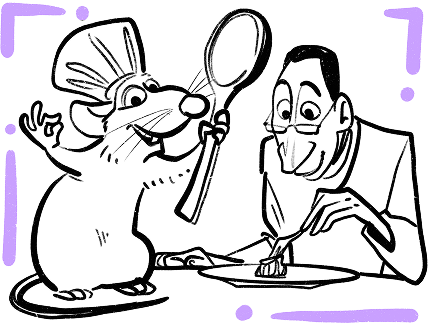
But where do all these personalities come from? Actually — from us. From people in the subway, childhood memories, favorite books, and random conversations. Writers catch inspiration from myths, culture, imagination, and remix it all into fresh, vivid characters.
The idea for Ratatouille was born with director Jan Pinkava, inspired by French cuisine and rats spotted in a restaurant. Later, Brad Bird took over the project and turned the story of a rodent’s adventures into something touching and inspiring.
Sometimes it all starts with one detail: WALL-E’s binocular-like eyes gave him that heartfelt look. Or, like Shrek, with an actor. Mike Myers decided the grumpy green giant should speak with a Scottish accent, which totally changed how people saw the character — making him even more charming and unique.
When creating The Lion King, the Disney team drew inspiration from Hamlet, documentary footage of the African savanna, and real lions they sketched from life.
Totoro was born from Hayao Miyazaki’s childhood memories of rural Japan and his belief in forest spirits. His look is a mix of cat, owl, and bear. Miyazaki hesitated to release the film, thinking it was too quiet and “plotless,” but in the end, that very simplicity made it iconic.
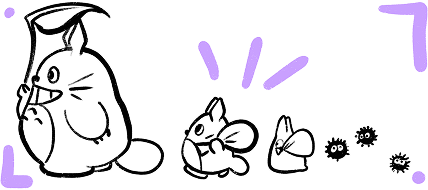
Po from Kung Fu Panda was originally envisioned as a hopelessly clumsy bear cub. But actor Jack Black infused him with charm and kindness, and the writers rewrote the character to match. That’s how Po became lazy, lovable, and completely relatable.
Phineas and Ferb were inspired by the creators Dan Povenmire and Jeff Marsh’s own childhood memories of endless summer vacations — when you could invent absolutely anything.
Shrek and Psychology
It turns out that universal behavior patterns live in our collective unconscious — and at the same time, they exist in cartoons. The Brave Hero, the willful Trickster (a character not bound by moral, ethical, or social norms), the secretive Shadow, the Mother — these familiar archetypes pop up across countless animated stories.
In Shrek, we see a courageous and kind Hero; in Lord Farquaad, the authoritarian, greedy, and cruel Shadow is unmistakable. It’s hard not to notice a maternal message in Fiona’s caring kindness. These archetypes spark an instant response from viewers of all ages, even though such characters are rare in real life.
A charismatic villain, with a conflicted personality, makes the audience doubt and empathize. He breaks the usual boundaries, inviting us to see the world in shades of gray. The goofy but kind character wins us over with sincerity and simplicity, stirring feelings of tenderness and a desire to protect him from harm.
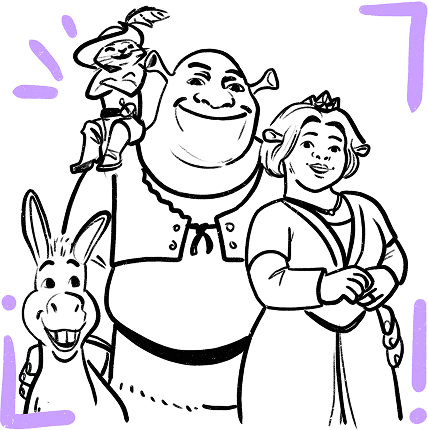
Disney’s Mulan became a symbol of strength and independence, inspired by a real Chinese legend. Mulan breaks stereotypes, showing that female power lies not in muscles, but in courage, wisdom, and determination.
The jokester Fox Nick from Zootopia often lands in unlucky situations, but his character is built at the crossroads of the trickster archetype and the charismatic loser who, despite a questionable reputation, still earns trust. Yes, he doesn’t always keep promises, but everyone understands his weaknesses.
All this is explained by the tricks of neuropsychology. The human brain automatically assigns characters qualities that align with its own values and beliefs. The viewer sees in heroes a reflection of themselves, their fears, and hopes. That’s why cartoon characters easily become friends, teachers, and an important part of our human world. Because they — are us.
Hayao Miyazaki’s heroes often come to life without a clear script. The Japanese director sketches a character, whispers ideas in their ear, then starts to weave the plot around them. For example, during work on a film, a magnificent elephant turned into a mime dreaming of becoming a conductor.
Miyazaki’s not-so-childish fairy-tale characters are carefully molded from stories, archetypes, and cultural symbols. Each character becomes a tiny inner cosmos, captured in animation.

How Cartoons Sneak Into Your Heart
Animation has this amazing — and a little bit scary — power to tap into our deepest feelings without even asking. Colors, pace, movements, and sounds work like buttons on an invisible remote control inside us.
On the screen, we see a beautiful landscape, cheerful characters… and suddenly, a purple dinosaur starts playing the guitar. That guy’s guaranteed to stir emotions and grab your attention.
Bright, saturated colors send joy right through the screen, while cool, muted tones speak the language of melancholy. Animation creators skillfully wield the psychology of color perception to guide our feelings and reactions.
Oh, and here’s a fun fact — animation is made to sound, not the other way around. First, the voices get recorded, then the movements are drawn. Change the sound effects or rhythm, and the whole cartoon feels different.
Take the Kung Fu Panda series, for example. The sound team went all out — smashing coconuts to mimic punches and dipping microphones in yogurt to craft the perfect background ambiance.
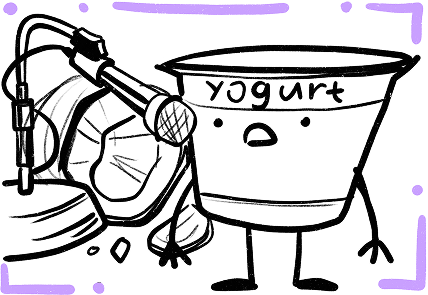
The Tightrope Walk Between Reality and Madness
Great animation is a master of subtle tricks — it plays with your expectations like a magician, barely letting you notice. Sure, the secret sauce lies in colors and sounds, but don’t sleep on the little things: jumps, arm swings, every tiny move the characters make. Fast scenes pump up excitement and energy, while slow ones give you space to breathe, think, and feel the story.
Even if a studio uses cutting-edge neural networks, artists still break the animation by hand — bending reality just right to splash that perfect dose of cartoon madness. Sounds like a paradox? Exactly! That’s the whole point: the magic lies in the balance between believable and delightfully absurd.
If the character gets too real, you start feeling sorry for them. But push them into full-blown nonsense, and you lose trust. That’s why artists play with squash and stretch — exaggerating shapes and moves to shout out emotions, personality, and pure motion.
A cartoon cat who stretches like chewing gum or flattens like a pancake instantly stands out as one-of-a-kind. The audience gets it: this is playtime, and in this game, anything is possible.
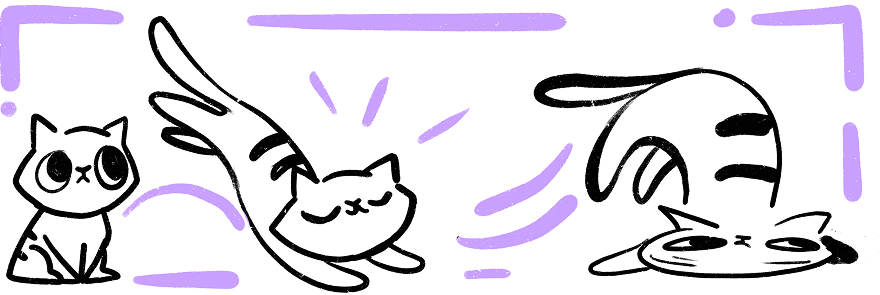
When Words Are Not Needed
Cartoons don’t need translators. Laughter and tears are universal passports to the world of animation. Tom and Jerry, without a doubt, are true cartoon polyglots. Just a few classic gags with shouts like “AAAAAAH!” and “OUCH!” — and the audience is already laughing, no matter what language the original is in.
Why does this happen? Because the humor is built on universal visual gags — comedic moments everyone understands. Who hasn’t seen a cat crash into a wall while chasing a mouse? That trick is familiar to viewers anywhere on the planet. Cartoon language easily crosses borders and cultural barriers.
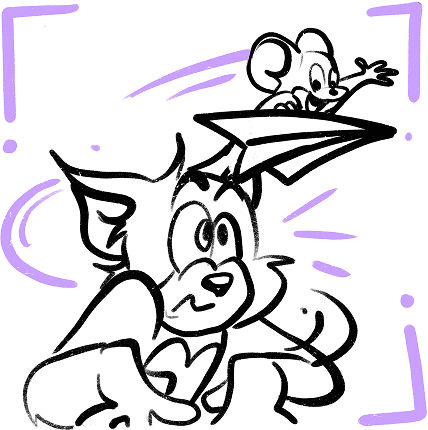
Every cultural background adds its own flavor to animation, leaving a distinct mark. Japanese anime is like a pure, calm piano melody. Themes of life, death, love, and friendship weave through folklore and tradition. Deep pauses let you sink in and truly feel the moment.
European animation tends to be more realistic. Its heroes carry both virtues and flaws. Charming Lupin and the spirited Fixies could easily walk the streets among us.
Animation doesn’t always sparkle with words or loud emotional phrases — there’s room for expressive pantomime. In some stories, silence itself becomes a character. In Finding Nemo, a fleeting moment of understanding between father and son stirs the deepest feelings without a single word. Everything is clear through a glance, a gesture, a subtle touch.
The Inner Child Beyond Reality
It may sound unusual, but cartoons are ever-changing beings, and we ourselves become part of their magical process. Hedgehog in the Fog is the perfect example of this.
The little viewer feels for the lost Hedgehog, wanting to encourage and protect him. The prickly hero, with a small bundle on his shoulder, wanders alone through the thick fog, hiding behind every bush, flinching at every sound — yet slowly but surely, he moves toward his dream. Over time, that same viewer begins to see in the fog a reflection of their own life. The Hedgehog searches for meaning, makes discoveries, faces fears — loneliness, uncertainty, disappointment — overcomes them, and finds his way.

The Hedgehog and the Bear still gaze at the stars, drink tea brewed from juniper twigs, savor raspberry jam, and dream. The cartoon itself doesn’t change, but with experience, the perspective shifts, and with it, the very way it is perceived.
There are cartoons you want to return to again and again: to open the creaky door of Aburaya Bathhouse, descend to grumpy Grandpa Kamaji, ride the magical elevator to Yubaba’s lavish halls, and speed away on the swift train to the Bottom of the Swamp stop. To walk alongside the faceless spirit through the night forest, tame the dragon with sparkling eyes, and save everyone, because you are part of this world. After Spirited Away, the music lingers in the soul, as if the story itself settled in the mind and whispers, “Come back again.”
In the world of cartoons, everything is possible: a glass of juice sings, animals talk, and the laws of physics take a vacation offscreen. We believe in this because there, a different kind of truth exists — a special one. Cartoons reveal reality from unexpected angles, where we are not just spectators but co-creators — we finish the drawings, listen beyond the sounds, imagine what’s unsaid. And sometimes, we change worlds with our gaze. Here, everything is possible. And even a little more.
When art meets technology, magic is born. Drawn worlds begin to breathe, laugh, and sorrow with us. They touch our hearts at any age. And looking at these colorful heroes, we see ourselves — that very inner child who believes in miracles and isn’t afraid to feel.
We’ve ventured beyond the boundaries of time and space. By the way, it’s empty there.
Thank you!


